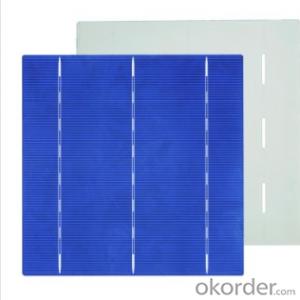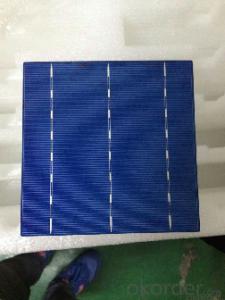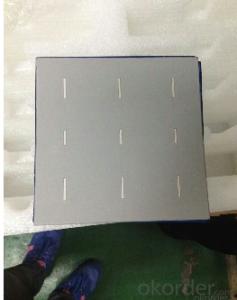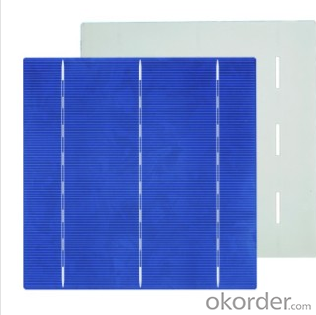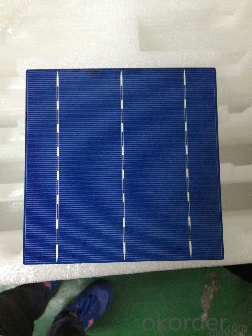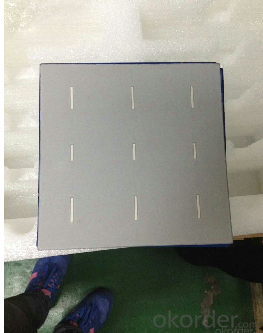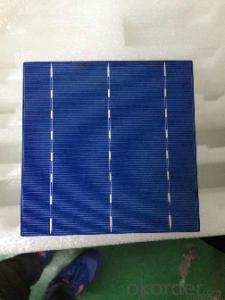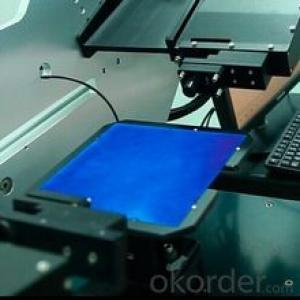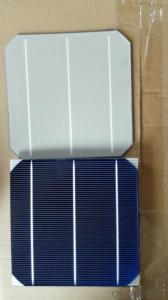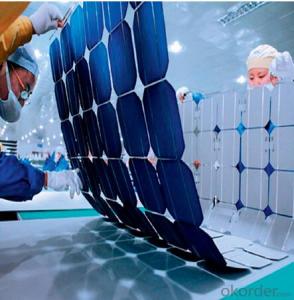Emcore Solar Cells Poly Solar Cells 156mmx156mm from CNBM
- Loading Port:
- China main port
- Payment Terms:
- TT OR LC
- Min Order Qty:
- 500 pc
- Supply Capability:
- 10000000 pc/month
OKorder Service Pledge
OKorder Financial Service
You Might Also Like
1.Product Description:
Production and Quality Control
CSG fully integrated PV chain from silicon materials, ingot, wafer, solar cell to solar module, and well-established QC management system, to guarantee consistency of high quality;
Mature technical control and strict sorting standard, to ensure consistency and reliability of solar cell;
Completely careful operation during production to avoid micro-cracks and reduce breakage rates during module assembly;
Electrical Properties
Mature crystalline cells manufacturing technology and complete quality control system, to ensure excellent electrical stability;
Lower module encapsulation loss realized by reasonable electrical characteristics setting, including high voltage and low current, high parallel resistance and low series resistance, classification with precise current classes, and positive power tolerance;
Excellent conversion efficiency, weak light performance and shortwave response guaranteed by leading R&D innovation system;
Recommend Welding Technique
Welding:tin-coated copper ribbons, coated with 20-25μm thickness (64%Sn,36%Pb)
2.Main feature:
Better shortwave response ensured by Selective Emitter Technology;
Better continuousness of fingers and stable performance ensured by Double Printing Technology;
Whole-process inspection from wafer input to cell packaging, to ensure high quality and excellent performance;
3.images:
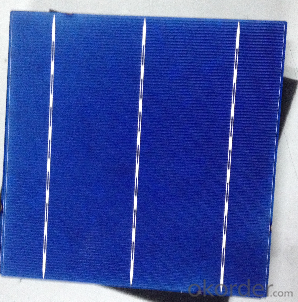
4.specifications:
Format 156 mm × 156 mm ± 0.5 mm
Thickness- 210μm ± 40 μm
Front (-) 1.5mm bus bars (silver),blue anti-reflection coating (silicon nitride)
Back (+) 2.5mm wide soldering pads (silver) back surface field (aluminium
5.FAQ:
What is the advantages of your products?
1. High efficiency and High power.
2. Long-term electrical stability.
3. Lowest price and Fastest delivery.
4. Good quality and good service.
5. Bulk supply
6. Good Warranty
7. Big Sale
8. More than 25 years on the lifetime.
- Q: Can solar cells be used in indoor lighting applications?
- Yes, solar cells can be used in indoor lighting applications. However, since solar cells require sunlight to generate electricity, they may not be as efficient in indoor settings where natural light is limited. Additionally, the amount of energy generated may not be sufficient for high-powered indoor lighting, making solar cells more suitable for low-power applications or as supplemental lighting sources.
- Q: How many solar cells are there in a solar panel?
- Maybe 15 or more.
- Q: Can solar cells be used for military applications?
- Yes, solar cells can be used for military applications. They can provide a reliable and renewable source of power in remote and off-grid locations, reducing the dependency on fuel logistics. Solar cells can be used to power communication systems, surveillance equipment, and even provide energy for soldiers in the field. Additionally, solar-powered devices are silent, making them suitable for stealth operations.
- Q: Where and how can I find more information of Photovoltaic Cells Solar Panels? Can anybody share more about that?
- Photovoltaic cells are considered to be one of the most reliable sun power generation materials and very easy to to maintain.
- Q: Can solar cells be used in military applications?
- Yes, solar cells can be used in military applications. They have various applications in the military, including powering remote surveillance systems, communication equipment, and providing electricity to field operations in remote areas. Solar cells offer a reliable and sustainable source of energy, reducing the reliance on traditional fuel sources and enhancing the operational efficiency of military units. Additionally, solar technology can be integrated into portable and lightweight systems, improving mobility and reducing the logistical burden for military personnel.
- Q: What is the impact of partial shading on solar cell performance?
- Partial shading can significantly impact the performance of solar cells. When certain areas of a solar panel are shaded, it creates a mismatch in the amount of sunlight received across the panel. This uneven distribution of sunlight can lead to a decrease in overall power output, as shaded cells generate less electricity than unshaded cells. Additionally, partial shading can cause hotspots, where shaded cells become reverse biased and may become damaged due to excessive heat. Therefore, it is crucial to minimize shading on solar panels to maintain optimal performance and ensure maximum energy production.
- Q: How much do solar cells cost?
- The cost of solar cells can vary depending on various factors such as the type and size of the solar cell, location, installation costs, and any additional equipment needed. On average, solar cells can range from a few hundred dollars for small, portable units to thousands of dollars for larger, more efficient panels. It is important to consider the long-term savings and benefits of solar energy when evaluating the cost.
- Q: How do solar cells handle voltage fluctuations?
- Solar cells handle voltage fluctuations through the use of voltage regulators or charge controllers. These devices ensure that the voltage output from the solar cells remains stable and within a safe range by regulating the flow of current. This helps to protect the solar cells from damage and ensures efficient power generation.
- Q: How do monocrystalline solar cells differ from polycrystalline solar cells?
- Monocrystalline solar cells are made from a single crystal structure, resulting in a uniform dark color and higher efficiency. On the other hand, polycrystalline solar cells are made from multiple crystal structures, giving them a speckled appearance and slightly lower efficiency.
- Q: What is the expected degradation rate of a solar cell?
- The expected degradation rate of a solar cell can vary depending on various factors such as the quality of materials used, manufacturing processes, environmental conditions, and maintenance practices. However, on average, a well-designed and properly maintained solar cell can experience an annual degradation rate of around 0.5% to 1%. This means that over time, the solar cell's efficiency may decrease by 0.5% to 1% per year.
Send your message to us
Emcore Solar Cells Poly Solar Cells 156mmx156mm from CNBM
- Loading Port:
- China main port
- Payment Terms:
- TT OR LC
- Min Order Qty:
- 500 pc
- Supply Capability:
- 10000000 pc/month
OKorder Service Pledge
OKorder Financial Service
Similar products
Hot products
Hot Searches
Related keywords
